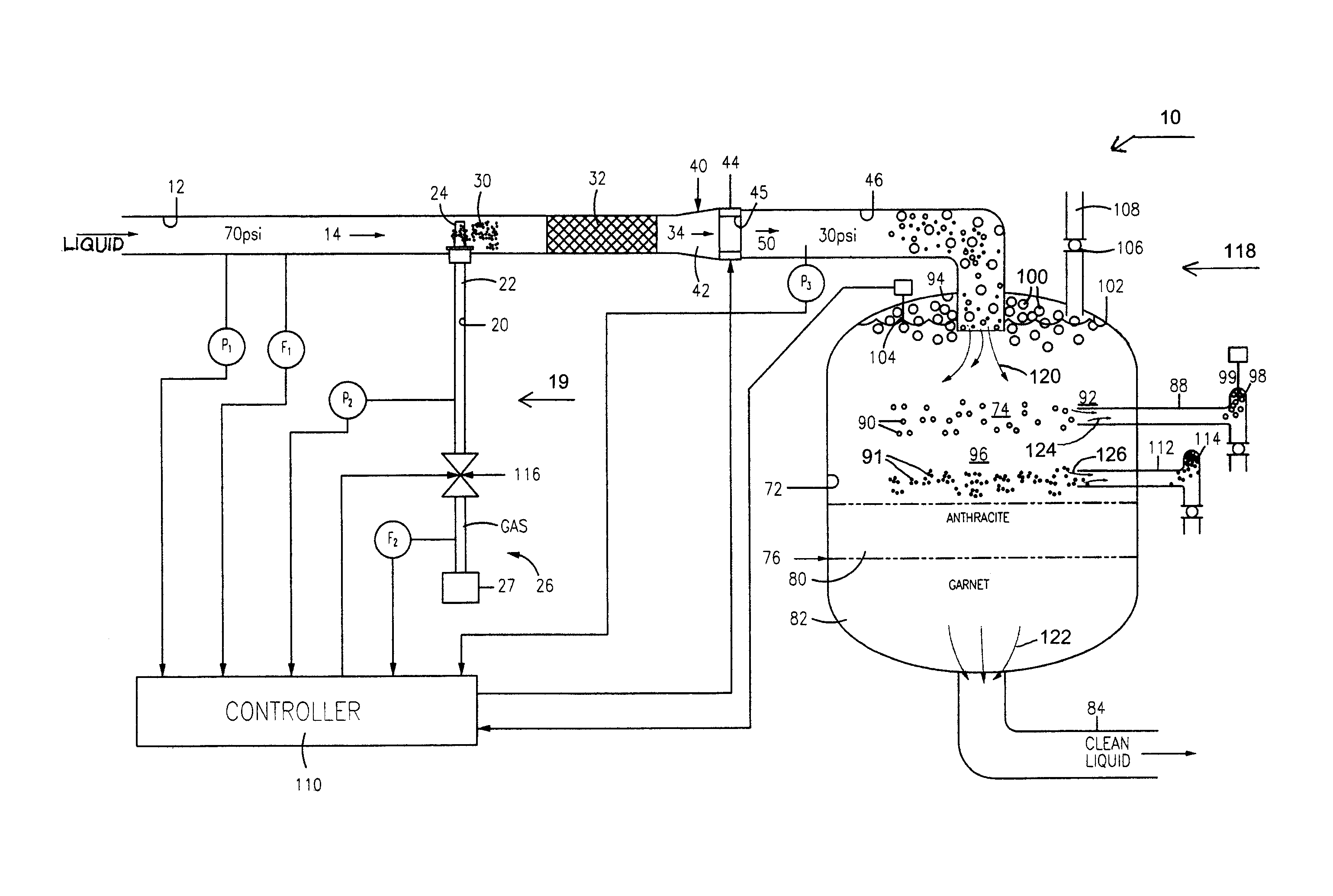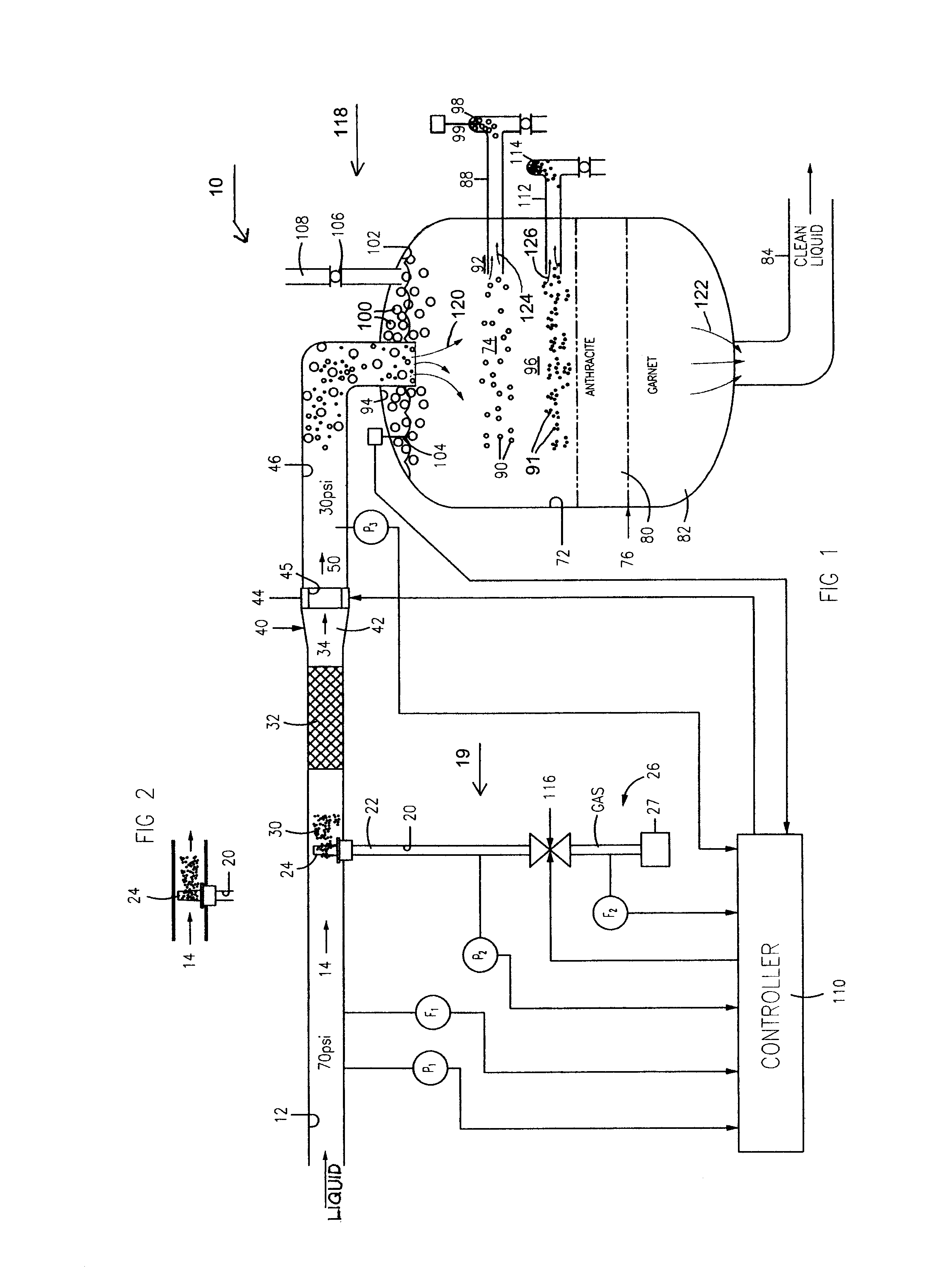Gas bubble generation for coalescing
a technology of gas bubbles and coalescing, which is applied in the directions of transportation and packaging, separation processes, evaporation, etc., can solve the problems of moving into the media bed and clogging the media bed, and achieve the effect of minimizing the clogging of the media bed
- Summary
- Abstract
- Description
- Claims
- Application Information
AI Technical Summary
Benefits of technology
Problems solved by technology
Method used
Image
Examples
Embodiment Construction
[0009]FIG. 1 illustrates a coalescing system 10 that includes an initial conduit 12 that carries a fluid stream that includes a primarily liquid stream 14 under a pressure P1 such as 70 psi (30 psi to 140 psi) and a flow velocity F1 such as 15 feet per second (7 to 30 fps). In one example, the fluid stream includes dissolved bits of copper and nickel that lie in an acid-water solution such as sulfuric acid and water, along with undissolved particles of hydrocarbons.
[0010]A bubble generator apparatus 19 injects bubbles into the liquid stream. The bubbler generator apparatus includes a diffuser conduit 20 that carries gas 22 under a pressure P2 such as 5 psi (preferably 2 to 10 psi) above the pressure at P1 in the liquid stream 14 and at a gas flow velocity F2 such as 15 feet per second (7 to 30 fps) from a source 26 of pressured air to a diffuser 24 in the liquid stream 14. The initial pressure of the liquid stream in initial conduit 12 is at least 70 psi and the pressured air or oth...
PUM
| Property | Measurement | Unit |
|---|---|---|
| diameters | aaaaa | aaaaa |
| size | aaaaa | aaaaa |
| diameters | aaaaa | aaaaa |
Abstract
Description
Claims
Application Information
 Login to View More
Login to View More - R&D
- Intellectual Property
- Life Sciences
- Materials
- Tech Scout
- Unparalleled Data Quality
- Higher Quality Content
- 60% Fewer Hallucinations
Browse by: Latest US Patents, China's latest patents, Technical Efficacy Thesaurus, Application Domain, Technology Topic, Popular Technical Reports.
© 2025 PatSnap. All rights reserved.Legal|Privacy policy|Modern Slavery Act Transparency Statement|Sitemap|About US| Contact US: help@patsnap.com


